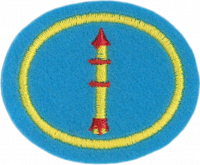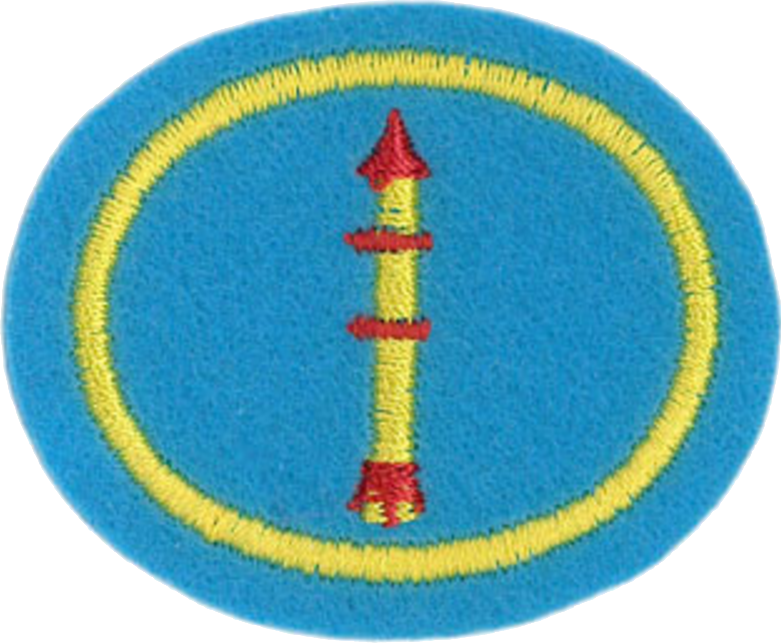Difference between revisions of "AY Honors/Model Rocketry/Answer Key/es"
From Pathfinder Wiki
< AY Honors | Model RocketryAY Honors/Model Rocketry/Answer Key/es
(Created page with "</noinclude>") |
(Updating to match new version of source page) |
||
| (3 intermediate revisions by 2 users not shown) | |||
| Line 1: | Line 1: | ||
{{HonorSubpage}} | {{HonorSubpage}} | ||
| − | <section begin="Body" /> | + | <section begin="Body" /> |
{{ansreq|page={{#titleparts:{{PAGENAME}}|2|1}}|num=1}} | {{ansreq|page={{#titleparts:{{PAGENAME}}|2|1}}|num=1}} | ||
<noinclude></noinclude> | <noinclude></noinclude> | ||
| Line 40: | Line 40: | ||
{{CloseReq}} <!-- 3 --> | {{CloseReq}} <!-- 3 --> | ||
{{ansreq|page={{#titleparts:{{PAGENAME}}|2|1}}|num=4}} | {{ansreq|page={{#titleparts:{{PAGENAME}}|2|1}}|num=4}} | ||
| − | <noinclude> | + | <noinclude></noinclude> |
| − | </noinclude> | + | <!-- 4. Definir los siguientes: --> |
| − | <!-- 4. | + | <noinclude></noinclude> |
| − | <noinclude | ||
| − | |||
{{ansreq|page={{#titleparts:{{PAGENAME}}|2|1}}|num=4a}} | {{ansreq|page={{#titleparts:{{PAGENAME}}|2|1}}|num=4a}} | ||
<noinclude></noinclude> | <noinclude></noinclude> | ||
| Line 103: | Line 101: | ||
{{CloseReq}} <!-- 4 --> | {{CloseReq}} <!-- 4 --> | ||
{{ansreq|page={{#titleparts:{{PAGENAME}}|2|1}}|num=5}} | {{ansreq|page={{#titleparts:{{PAGENAME}}|2|1}}|num=5}} | ||
| − | <noinclude> | + | <noinclude></noinclude> |
| − | </noinclude> | + | <!-- 5. Nombrar y describir al menos ciatro diferentes sistemas de recuperación. --> |
| − | <!-- 5. | ||
| − | |||
| − | |||
| − | |||
{{clear}} | {{clear}} | ||
| Line 123: | Line 117: | ||
{{CloseReq}} <!-- 5 --> | {{CloseReq}} <!-- 5 --> | ||
{{ansreq|page={{#titleparts:{{PAGENAME}}|2|1}}|num=6}} | {{ansreq|page={{#titleparts:{{PAGENAME}}|2|1}}|num=6}} | ||
| − | <noinclude> | + | <noinclude></noinclude> |
| − | </noinclude> | + | <!-- 6. A partir de un kit, construir, terminar y pintar un cohete de una sola etapa que tiene un mínimo largor de 15 centímetros con un sistema de recuperación, como un paracaídas. Hacer de manera exitosa el lanzamiento y la recuperación de los cohetes con el sistema de recuperación desplegado adecuadamente. --> |
| − | <!-- 6. | ||
| − | |||
{{clear}} | {{clear}} | ||
| Line 134: | Line 126: | ||
<noinclude></noinclude> | <noinclude></noinclude> | ||
{{CloseReq}} <!-- 6 --> | {{CloseReq}} <!-- 6 --> | ||
| − | <noinclude> | + | <noinclude></noinclude> |
| − | </noinclude> | + | ==Referencias== |
| − | == | + | <noinclude></noinclude> |
| − | + | ||
| − | [[Category: | + | [[Category:Instructor Required{{GetLangSuffix}}|{{SUBPAGENAME}}]] |
| − | |||
| − | |||
| − | |||
{{CloseHonorPage}} | {{CloseHonorPage}} | ||
Latest revision as of 21:35, 1 January 2023
Cohetemodelismo
Nivel de destreza
1
Año
1970
Version
21.12.2025
Autoridad de aprobación
Asociación General
1
Conocer y explicar el código de seguridad para cohetes a escala.
2
Conocer y explicar la importancia de los componentes básicos de cohetes a escala.
3
Dibujar lo siguiente:
3a
Los pasos en el vuelo de un modelo de cohetes
3b
Un corte longitudinal de un motor de cohetes a escala, etiquetando cada parte
3c
Un tablero simple de control para lanzamiento usando los adecuados símbolos de un sistema eléctrico
4
Definir los siguientes:
4a
Guata
4b
Planeadores de empuje
4c
Pararse/atascarse
4d
Carga explosiva
4e
Apogeo
4f
Centro de gravedad
4g
Centro de presión
4h
Impulso
4i
Velocidad
4j
Eyección
5
Nombrar y describir al menos ciatro diferentes sistemas de recuperación.
6
A partir de un kit, construir, terminar y pintar un cohete de una sola etapa que tiene un mínimo largor de 15 centímetros con un sistema de recuperación, como un paracaídas. Hacer de manera exitosa el lanzamiento y la recuperación de los cohetes con el sistema de recuperación desplegado adecuadamente.


